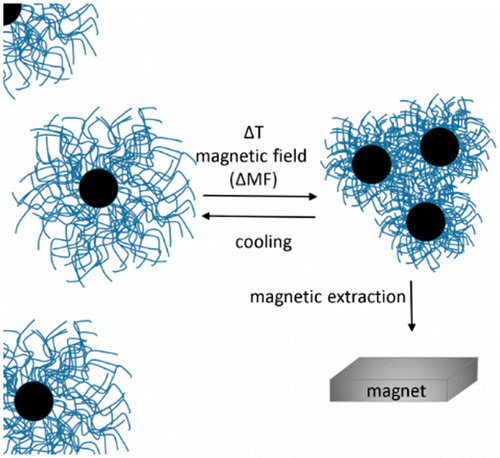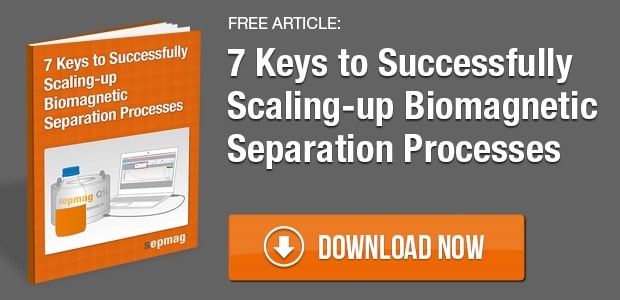Many people are not aware that magnetic nanoparticles used in cell separation techniques must be able to aggregate when a magnetic field gradient is applied. If the particles fail to aggregate they remain as single entities and are difficult to separate out of thesolution. An aggregation of magnetic nanoparticles is highly influenced by a magnetic field gradient and can be easily isolated and removed. Therefore, a thermally controlled reversible aggregation system is desirable.

A solution of magnetic particles can be thought of as a colloid in which the particles are a solid state suspended in a liquid. The particles are “soluble” as individual particles and are hydrophilicallowing them to bond with the aqueous solution they are suspended in. One waytoincrease the solubility of solid particles is to attach polymer brushes to the surface. The polymer brushes used in this thermally reversible aggregation system are made of Poly-N-isopropylacrylamide (PNIPAM). This polymer is temperature-responsive, meaning that itchanges from hydrophilic to hydrophobic as the temperature increases above 32°C, the lower critical solution temperature. So, the magnetic particles coated with PNIPAM brushes are able to bond with water at temperatures below 32°C and remain as single particles in solution. As the temperature increases beyond 32°C the brushes become hydrophobic and the particles aggregate together to achieve a lower energy state. At temperatures above the lower critical solution temperature the aggregated magnetic particles can easily be removed from solution by the introduction of an external permanent magnet. Temperature control over aggregation is useful to fine-tune the magnetic separation process and is another step towards developing smart materials for a variety of uses.
A group in Austria recently published their work in which they characterize methods of grafting PNIPAM brushes onto iron oxide nanoparticles. They optimized the grafting technique and brush density. Additionally they quantified the reversible aggregation behavior of the particles as a function of temperature. Specific details can be found in their published work.
Synthesis and magneto-thermal actuation of iron oxide core - PNIPAM shell nanoparticles.Kurzhals S, Zirbs R, Reimhult E. ACS Appl Mater Interfaces.2015 Aug 13
Related news:



